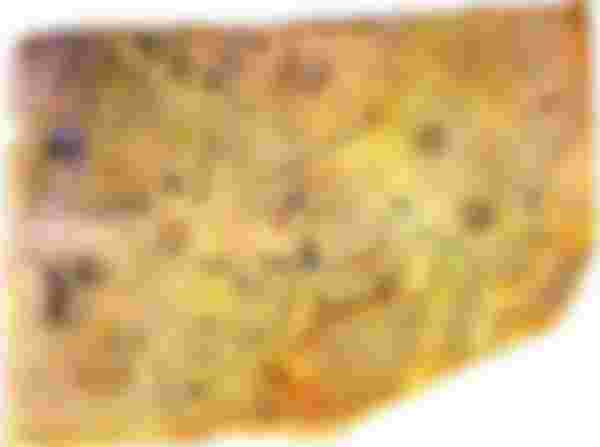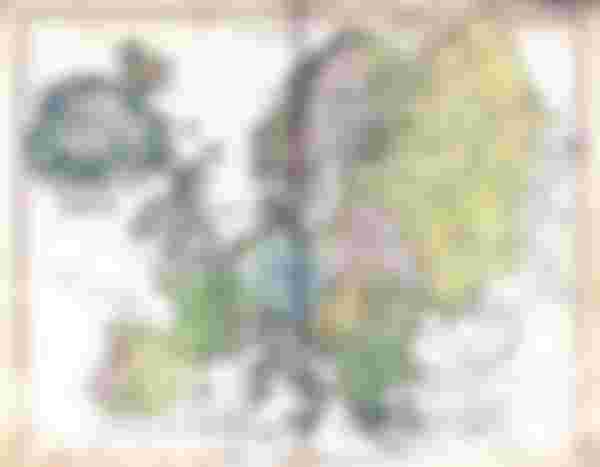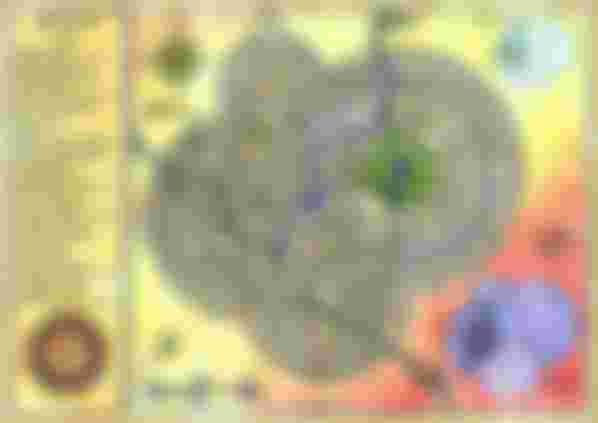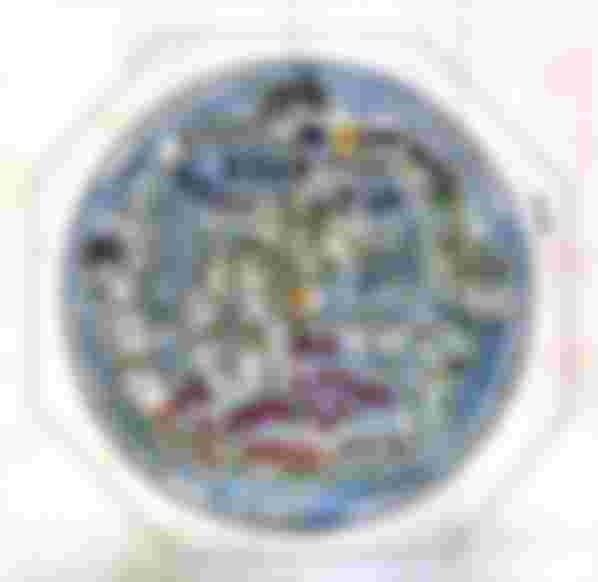
Most of the maps in history were drawn for beautiful and accurate guidance. Drawing these maps was as difficult as it was valuable. Abdul Quader reports on some of these valuable maps

Leo Belgicas
The strange word Leo Belgicas comes from the Belgian word. Which refers to present-day Belgium. The Austrian painter Michael Atzinger did this strangely beautiful work in 1583. It consists of the states of the Netherlands, Luxembourg and Belgium. There are many years of war history behind making the map. The Netherlands then fought for independence for a long eighty years. Dutch troops Brabant, Flanders, Frisia, Holland, Limburg, Guilders, Was known as Luxembourg and Zeeland. All were known as William Orange. This strangely beautiful map looks a lot like a lion. There were also reasons for inspiration in this portrait. At that time, the shape of a lion was considered a symbol of nobility. Michael Atzinger named the map Leo Belgicas. From then on, new trends in painting started. This famous map was first published in 1809, shortly after the declaration of a long twelve-year ceasefire. The strange map was published by Claus Jansjun Bischer. This was the biggest version for publisher Bischer. After the independence of the Netherlands in 1947, the third edition of the map was published by Bischer.

Book of Navigation
Ottoman naval commander Pierre Reyes designed several excellent maps. Numerous works of art of this Ottoman general were preserved in his own book, The Book of Navigation. The book was first published in 1521. Although there is disagreement about the year of publication. General Pierre Reiss dedicated the book to Ottoman Sultan Suleiman. The famous book accurately and accurately presents the islands, mountains, and seas of the Ottoman period. However, he neglected places that he did not consider important. Reyes' first map was published in 1513. North and South America were also connected to the map. The weird thing is, The southern part of South America and the coastal part of Antarctica shown on the map are very similar to the current map. Reiss's famous map is a historical document of the Ottoman Empire. His geological knowledge was remarkable. Reiss originally designed the map using this wise idea.

Cadid Atlas Tarkumesi
Cadid Atlas Tarkumesi is the first published map of the Muslim world. This is a map of the time of Sultan Selim-3 of the Ottoman Empire. The map was first published in 1803 in Istanbul, the capital of Turkey. Then it spread to the Muslim world. The artwork is made in European style. It is 36 cm long and 36 cm wide. Width. Sultan Selim allowed the printing of only 50 copies of the map. At the end of printing, the first copy was given to the Sultan. The rest of the copies were given to high-ranking officials of the state. Some copies were in state warehouses. Unfortunately the warehouse maps burned down. Many of Sultan Selim's reformed empires were destroyed by the revolt of Turkish troops. The fire of that rebellion destroyed the precious map of history. It is one of the oldest and rarest printed maps. The letters are quite neat. The map is durable and uses cloth instead of paper.

Dhaka, Friday, September 25, 2020
Beautiful map of the world
Most of the maps in history were drawn for beautiful and accurate guidance. Drawing these maps was as difficult as it was valuable. Abdul Quader reports on some of these valuable maps
Leo Belgicas
The strange word Leo Belgicas comes from the Belgian word. Which refers to present-day Belgium. The Austrian painter Michael Atzinger did this strangely beautiful work in 1583. It consists of the states of the Netherlands, Luxembourg and Belgium. There are many years of war history behind making the map. The Netherlands then fought for independence for a long eighty years. Dutch troops Brabant, Flanders, Frisia, Holland, Limburg, Guilders, Was known as Luxembourg and Zeeland. All were known as William Orange. This strangely beautiful map looks a lot like a lion. There were also reasons for inspiration in this portrait. At that time, the shape of a lion was considered a symbol of nobility. Michael Atzinger named the map Leo Belgicas. From then on, new trends in painting started. This famous map was first published in 1809, shortly after the declaration of a long twelve-year ceasefire. The strange map was published by Claus Jansjun Bischer. This was the biggest version for publisher Bischer. After the independence of the Netherlands in 1947, the third edition of the map was published by Bischer.
Book of Navigation
Ottoman naval commander Pierre Reyes designed several excellent maps. Numerous works of art of this Ottoman general were preserved in his own book, The Book of Navigation. The book was first published in 1521. Although there is disagreement about the year of publication. General Pierre Reiss dedicated the book to Ottoman Sultan Suleiman. The famous book accurately and accurately presents the islands, mountains, and seas of the Ottoman period. However, he neglected places that he did not consider important. Reyes' first map was published in 1513. North and South America were also connected to the map. The weird thing is, The southern part of South America and the coastal part of Antarctica shown on the map are very similar to the current map. Reiss's famous map is a historical document of the Ottoman Empire. His geological knowledge was remarkable. Reiss originally designed the map using this wise idea.
Cadid Atlas Tarkumesi
Cadid Atlas Tarkumesi is the first published map of the Muslim world. This is a map of the time of Sultan Selim-3 of the Ottoman Empire. The map was first published in 1803 in Istanbul, the capital of Turkey. Then it spread to the Muslim world. The artwork is made in European style. It is 36 cm long and 36 cm wide. Width. Sultan Selim allowed the printing of only 50 copies of the map. At the end of printing, the first copy was given to the Sultan. The rest of the copies were given to high-ranking officials of the state. Some copies were in state warehouses. Unfortunately the warehouse maps burned down. Many of Sultan Selim's reformed empires were destroyed by the revolt of Turkish troops. The fire of that rebellion destroyed the precious map of history. It is one of the oldest and rarest printed maps. The letters are quite neat. The map is durable and uses cloth instead of paper.
Black octopus from Europe Asia
In March 1904, just before the war between Russia and Japan, the whole world sat motionless. It was not a work of art, it was a satirical map full of humor. Named 'Black Octopus'. The featured map was drawn by Kisabar Ohara. It was a strange diplomatic map of the time. The name 'Black Octopus' was given by a prominent Englishman. The published map shows Russia as a black octopus. Eight arms are shown as the tool of the octopus. As shown on the map, the octopus is trying to capture many countries in Asia and Europe. Countries such as Finland, Poland, Crimea and the Balkans are already wounded by octopuses and are trying to capture Turkey, Persia and Tibet with all their might. Here the living people are depicted as the symbol of the country. The octopus' weapons were aimed at Korea and Port Arthur. The octopus is presented here as, Russia is trying to invade the whole of Asia. This is the first satirical map where Europe is not safe either. The world situation was explained to the world without any writing on the map. Russia is a terrible creature here, where other countries were at risk.

New York in Sardar's plan
In 184, British troops occupied New York. New York City was then under Dutch rule. The Dutch started living here in 1820. The map above shows the scenery of that time. Where the Hudson River, the huge island and the ancient city of Mannados. The map is known to all as a map by James Duke of York. The Duke was the chief of the Dutch colony. Another of his acquaintances, he is the brother of Dutch King Charles II. He later became known as James II. The Duke wanted to name the city after him. The sixteenth of expectations was fulfilled, later New York was named in his honor. It is also called the New York Birth Certificate. The design of the map is a lot like an old Dutch colony. With its rhetorical boundaries, lots of empty land, and thick water, the map is a masterpiece. The ships on the map point to the mighty British Empire.

Dhaka, Friday, September 25, 2020
Beautiful map of the world
Most of the maps in history were drawn for beautiful and accurate guidance. Drawing these maps was as difficult as it was valuable. Abdul Quader reports on some of these valuable maps
Leo Belgicas
The strange word Leo Belgicas comes from the Belgian word. Which refers to present-day Belgium. The Austrian painter Michael Atzinger did this strangely beautiful work in 1583. It consists of the states of the Netherlands, Luxembourg and Belgium. There are many years of war history behind making the map. The Netherlands then fought for independence for a long eighty years. Dutch troops Brabant, Flanders, Frisia, Holland, Limburg, Guilders, Was known as Luxembourg and Zeeland. All were known as William Orange. This strangely beautiful map looks a lot like a lion. There were also reasons for inspiration in this portrait. At that time, the shape of a lion was considered a symbol of nobility. Michael Atzinger named the map Leo Belgicas. From then on, new trends in painting started. This famous map was first published in 1809, shortly after the declaration of a long twelve-year ceasefire. The strange map was published by Claus Jansjun Bischer. This was the biggest version for publisher Bischer. After the independence of the Netherlands in 1947, the third edition of the map was published by Bischer.
Book of Navigation
Ottoman naval commander Pierre Reyes designed several excellent maps. Numerous works of art of this Ottoman general were preserved in his own book, The Book of Navigation. The book was first published in 1521. Although there is disagreement about the year of publication. General Pierre Reiss dedicated the book to Ottoman Sultan Suleiman. The famous book accurately and accurately presents the islands, mountains, and seas of the Ottoman period. However, he neglected places that he did not consider important. Reyes' first map was published in 1513. North and South America were also connected to the map. The weird thing is, The southern part of South America and the coastal part of Antarctica shown on the map are very similar to the current map. Reiss's famous map is a historical document of the Ottoman Empire. His geological knowledge was remarkable. Reiss originally designed the map using this wise idea.
Cadid Atlas Tarkumesi
Cadid Atlas Tarkumesi is the first published map of the Muslim world. This is a map of the time of Sultan Selim-3 of the Ottoman Empire. The map was first published in 1803 in Istanbul, the capital of Turkey. Then it spread to the Muslim world. The artwork is made in European style. It is 36 cm long and 36 cm wide. Width. Sultan Selim allowed the printing of only 50 copies of the map. At the end of printing, the first copy was given to the Sultan. The rest of the copies were given to high-ranking officials of the state. Some copies were in state warehouses. Unfortunately the warehouse maps burned down. Many of Sultan Selim's reformed empires were destroyed by the revolt of Turkish troops. The fire of that rebellion destroyed the precious map of history. It is one of the oldest and rarest printed maps. The letters are quite neat. The map is durable and uses cloth instead of paper.
Black octopus from Europe Asia
In March 1904, just before the war between Russia and Japan, the whole world sat motionless. It was not a work of art, it was a satirical map full of humor. Named 'Black Octopus'. The featured map was drawn by Kisabar Ohara. It was a strange diplomatic map of the time. The name 'Black Octopus' was given by a prominent Englishman. The published map shows Russia as a black octopus. Eight arms are shown as the tool of the octopus. As shown on the map, the octopus is trying to capture many countries in Asia and Europe. Countries such as Finland, Poland, Crimea and the Balkans are already wounded by octopuses and are trying to capture Turkey, Persia and Tibet with all their might. Here the living people are depicted as the symbol of the country. The octopus' weapons were aimed at Korea and Port Arthur. The octopus is presented here as, Russia is trying to invade the whole of Asia. This is the first satirical map where Europe is not safe either. The world situation was explained to the world without any writing on the map. Russia is a terrible creature here, where other countries were at risk.
New York in Sardar's plan
In 184, British troops occupied New York. New York City was then under Dutch rule. The Dutch started living here in 1820. The map above shows the scenery of that time. Where the Hudson River, the huge island and the ancient city of Mannados. The map is known to all as a map by James Duke of York. The Duke was the chief of the Dutch colony. Another of his acquaintances, he is the brother of Dutch King Charles II. He later became known as James II. The Duke wanted to name the city after him. The sixteenth of expectations was fulfilled, later New York was named in his honor. It is also called the New York Birth Certificate. The design of the map is a lot like an old Dutch colony. With its rhetorical boundaries, lots of empty land, and thick water, the map is a masterpiece. The ships on the map point to the mighty British Empire.
Excellent map of Samarkand
About before the birth of Jesus. Alexander the Great conquered a city. The time was 329 BC. The city was known to the Greeks as Maracanda. Earlier, in 600 BC, the city was known as the capital of Sadgiana in ancient Persia. The city is now a province of Uzbekistan. It is the desert capital of the Samarkand province of Uzbekistan. The word Samarkand comes from the ancient Persian word asmara, meaning stone, and from the root of the Sojian language, meaning fort or city. The location of this city from China to the Mediterranean. The town is located on the banks of the river Jerfshan. The original map of the city at that time was not found. But the famous cartographer Robert Elbeta reconstructed the map with the help of Photoshop and Illustrator. The literal style of the map is a lot like the Arabic language. The circular overlap of its design makes the cellular structure look like a photograph. Robert Albeta is a graphic designer.

Heavenly map of the universe
The Planisphere of Aratus or the constellation of the universe. It is basically a map of imaginary celestial orbits designed by Andreas Calierius. Very few people know Andreas. His map of the celestial universe is a map of the estimated orbital space. It was published in 180. This is part of his published book Harmony Macrocosmica. The orbit of the universe was mapped according to the information given by the Greek astronomer and poet Aratus in the astronomical manuscript. It is a heavenly universe painted exactly in the shape of the universe. The map shows the earth in the middle of the orbit. Here the sun is like the universe, The moon and other planets and stars also revolve around the earth and are located near the various signs given by astronomy. The orbits are naturally smooth and everything is in a perfectly clean and proper place. Harmonia is the most beautiful map in the world. It is a grand assembly of the imaginary world. The Harmonia Manuscript contains more outstanding works by Andreas Calierius. The manuscript contains numerous other maps of astronomy.
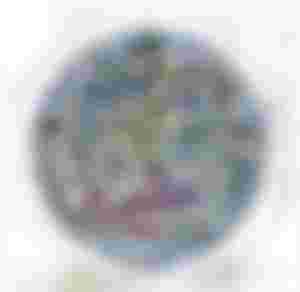
Cheonhado of Korea
Chionhado, a city map of 1800 in Korea. Cheonhado originates from the Korean word. The word literally means 'complete map under heaven'. From then until today, the city has been known as Chionhado. It is thought that at some point in the 18th century, Korea published this strange map. At its very center look like a mysterious polar mountain. The Korean Buddhist, Jain and Hindu communities believe that this polar mountain is not only the natural hemisphere, it is the spiritual center of the universe. Some scholars claim that this is an inspiration for the modernization of the world map. As much as Koreans are interested in the map, people in no other country in the world are so interested in the relative size of their country. The geographical location of the map is the Cheonhado region bordering China and the polar mountains. However, the map shows only Korea, not China or Japan. The Cheonhado map became popular in Korea in the 19th century.


